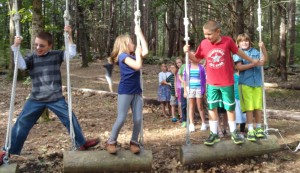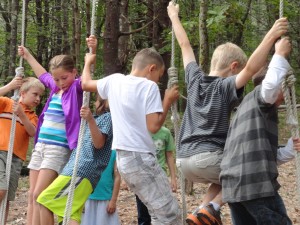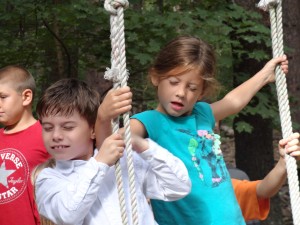 Next week will be October. We are all wondering how that can be possible. Yesterday the comment arose, “didn’t school just start?!” This week we released our monarch butterfly. Caroline had brought in the caterpillar in the second week of school. It molted twice to become a chrysalis and then in 10 days emerged as a beautiful butterfly. We think she flew off to Florida. This week, Parsley, the zebra swallowtail caterpillar that Noah brought in became a chrysalis. It is interesting to see how completely different the two are. Parsley will need to winter over in a safe place, to hopefully emerge in the spring as one of the first butterflies we
Next week will be October. We are all wondering how that can be possible. Yesterday the comment arose, “didn’t school just start?!” This week we released our monarch butterfly. Caroline had brought in the caterpillar in the second week of school. It molted twice to become a chrysalis and then in 10 days emerged as a beautiful butterfly. We think she flew off to Florida. This week, Parsley, the zebra swallowtail caterpillar that Noah brought in became a chrysalis. It is interesting to see how completely different the two are. Parsley will need to winter over in a safe place, to hopefully emerge in the spring as one of the first butterflies we 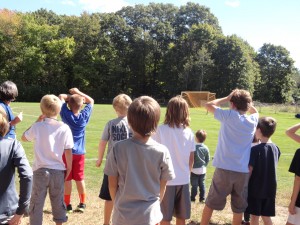 see in summer.
see in summer.
Book Clubs – Story Elements
Social Emotional Learning – Building Relationships through Cooperation and Collaboration
A week ago the children were able to preview sets of books. They were all picture books about the challenges and joys of writing. The children selected their two top choices in the hope that they would read one of those in their club. All of the children were able to read either their first or second choice. They met this week to read and discuss together.
The class developed a few guidelines for book clubs before they began. We decided it was important to make sure everyone had a chance to speak. We even agreed it would be nice if it was equal – the children are aware if they have a tendency to talk more than listen. We are working together to build both skills. They asked each other to be serious about the work and not silly. They thought those guideline would be enough. They were.
 The four groups met and decided how they would read the book. Some groups read silently on their own and then met, while others read the book aloud to each other. Once all the reading was done, the clubs worked to identify the story elements and to describe the plot. Finally they shared what they, as reader, had learned about writing. Here is some of what was discovered: “Don’t give up. Believe in yourself even if you get rejected at first.” “Write from your heart. Simple stories can sometimes be the best.” “Look all around you and write what you see. Life isn’t really boring.” “Everyone can be an author.”
The four groups met and decided how they would read the book. Some groups read silently on their own and then met, while others read the book aloud to each other. Once all the reading was done, the clubs worked to identify the story elements and to describe the plot. Finally they shared what they, as reader, had learned about writing. Here is some of what was discovered: “Don’t give up. Believe in yourself even if you get rejected at first.” “Write from your heart. Simple stories can sometimes be the best.” “Look all around you and write what you see. Life isn’t really boring.” “Everyone can be an author.”
The general agreement was that the book clubs had gone well. Everyone participated and said they were looking forward to reading together again. Our next book club groups will be centered around a particular genre. We will all read a mystery.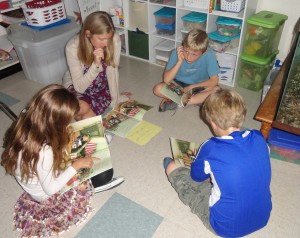
Growing Writing Possibilities
We have been reading a lot about writing. We have been learning about the elements of stories and about the traits of all good writing. The children have listed many favorite things they like, places they enjoy, and memories they love. They have considers times that have been exciting and times that have been calm. Each of those items could contain a possible piece of writing.
In Word After Word After Word the author, Ms. Mirabel, says that she writes to make her life change they way she wants it to be. She says that if each of the characters in the book (and us as readers) listen carefully we will hear words whispering to us. She says when we do they will just spill out onto the page word after word after word. From that book and our discussions we know we can write about people and places and moments. We can capture our feelings in lists and phrases and poems. Many of the children have been writing poems to capture things they like. Several have met the challenge of writing poems about writing to join the queue of poems we read each day – writing, and writing well, has been our focus for the last week and a half. Several of the children are writing sports stories. Some are writing adventures and some are writing personal narratives.
We read The Three Little Fish and the Big Bad Shark and Goldilocks and Just One Bear this week to act as mentor texts for innovations and extensions of old favorites. The first is a fishy version of The Three Little Pigs. The second is an after story of what could happen when Baby Bear and Goldilocks grow up and meet in the city. We generated a long list of “the three …” and “the big bad…” Many of the children are playing around with those ideas too. Writing is a fun time in our room full of creativity and ideas.
We have continued to work with estimation of amount and we have added distance. At the beginning of the week the children learned what the term diameter is. The estimated the diameter of a watermelon one day along with the weight. They also made estimates of the length of different parts of their bodies and the diameter of their head. We discovered that estimates of amount over time are easier than estimates of distance. We also discovered that we get better with practice and attention.
We worked together to make sure that everyone understood the term place value. When I asked earlier in the week we got some very interesting responses. Only a few of the children described it as the value of a numeral according the place it was in a larger number. We will continue to solidify this understanding while learning about thousands and more
There is so much more to share and explain – ask your child about:
… his or her super power and how the art for that project is coming along. Thank you Mrs. Haight for helping us with that this week
…the pie graph showing all eight intelligences and how he or she will explain the choices and decision that were made, or
… what s/he is reading and writing.
We have lots going on in 3E. Your children are great – they do have super powers!
Have a wonderful weekend!
Dates to remember –
NECAP dates – Reading Tests – October 9, 11 and 12
Math Tests – October 15, 16 and 18
Author Visit – Steve Cotler – October 17






